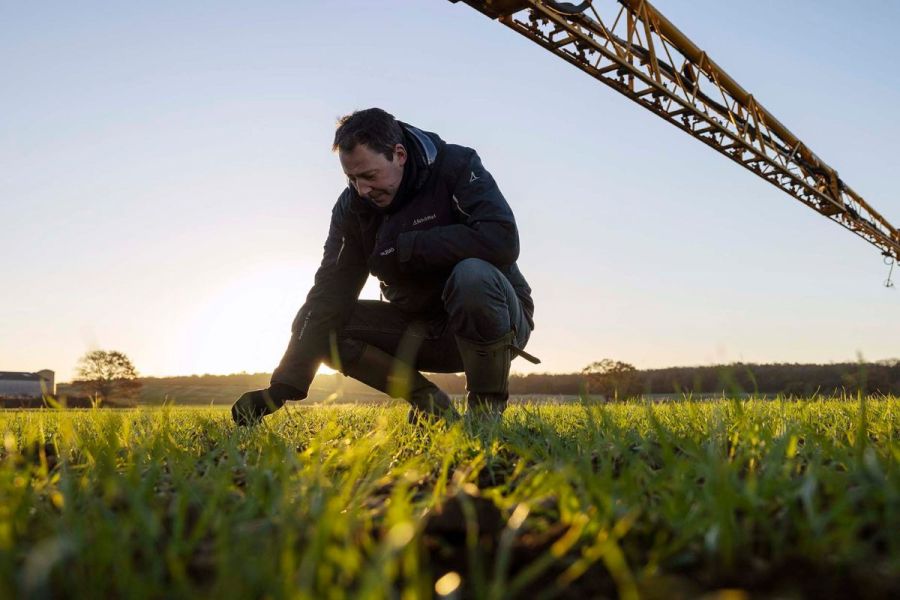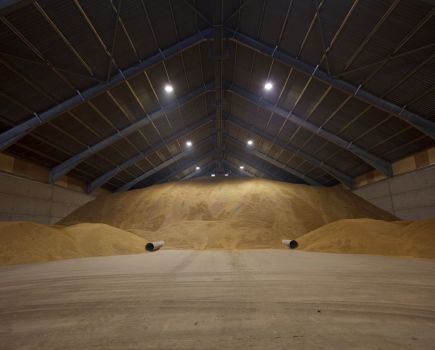A longer than usual period between harvest and drilling could encourage earlier drilling. CPM meets a grower keen to hold off.
“There’s so much more financial risk now than two years ago.”
By Mike Abram
It’s the time of year Lincolnshire farmer Daniel King finds perhaps least enjoyable – where the main task is to spray off stale seedbeds, while doing everything possible to avoid drilling winter wheat until at least 15 October.
With harvest having finished a full month ahead of usual, cultivation work is well ahead of schedule, he says. “There’s a lot of talk among farmers locally about when to start drilling, and if we get a lot of rain, I think a lot will get drilled quite quickly.
“With machinery, labour, fertiliser, agchem and finance costs going through the roof, it’s imperative we don’t have too many disasters, and probably that we also don’t have too much spring cropping as it just doesn’t generate enough money,” he explains.

If nitrogen fertiliser was the same price as two years ago, Daniel King says he’d be a lot more relaxed about holding off drilling until mid-October. Now the stakes are much higher.
Those same pressures leave him in an uncomfortable place, he admits. “If nitrogen fertiliser was still the same price as two years ago at around £290/t, I’d be a lot more relaxed. I’m not looking forward to holding off starting drilling, even though I will do. There’s so much more financial risk now than two years ago.
“It’s not an enjoyable time of year. I enjoy it once we get drilling, but I don’t like the wait and anxiety about whether we’re going to get it in, or whether we’re going to have another autumn 2019 where we didn’t get hardly anything in, which wasn’t a lot of fun.”
The reason for delaying is blackgrass, of course. “You’re going to get better yields from September drilled wheat if you haven’t got blackgrass, but with blackgrass you risk losing yield anyway. I’ve had fields here where it has halved our yield. That focuses the mind, as well as the potential damage you’re doing for the next five years from the seed return.”
Daniel farms 740ha across three farms near Bourne, two under contract farming arrangements, while the home farm is a 240ha tenancy on the Grimsthorpe Estate. He took over the tenancy from his father as a 21-year-old, around 30 years ago.
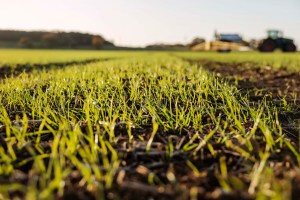
The herbicide stacks can thin the stand of wheat plants, so Daniel compensates for this by adopting a relatively high seed rate.
“I’ve made some mistakes, but I’m big on attention to detail and critical of my own crops, even though they are pretty good. I’ve always spent a lot on them – I’ve never skimped on anything, spending more on pre-emergence herbicides and fungicides, including T3s, than most others.”
The aim is to not to be able to shut the barn doors at the end of harvest, he says. Last year’s harvest was a decent attempt, with most crops above his five-year averages.
The farm grows predominantly first wheats – Gleam, Champion and KWS Cranium – rotated with winter barley and break crops including winter beans, spring linseed and spring oats. Those breaks play an important role in keeping blackgrass under control, which has been a challenge since the early 1990s, he says.
“Our problems started when we’d been growing a wheat/oilseed rape/wheat/OSR rotation, 10 years on the bounce – that’s when we began getting into trouble.”
Wheat was typically drilled in early September at low seed rates, with advice at the time suggesting each seed needed to, and would, maximise its tillers. “But the grassweeds were just swamping it out,” says Daniel.
No other break crops were being grown, nor spring crops, while resistance quickly built up to products of the time, such as Wildcat (clodinafop), Cheetah (fenoxaprop) and Hawk (clodinafop+ trifluralin), and the sulfonylurea product Lexus (flupyrsulfuron) which followed.
“The penny started to drop when we had survivors after the first year using Atlantis (mesosulfuron+ iodosulfuron). It was this wonder chemical that was going to solve all of our issues and it didn’t.
“We were losing 3-4t/ha of yield to blackgrass and not realising how much damage we were doing by adding to our seed burden in the soil – it was a pretty rubbish time, not least because wheat was £50-60/t, albeit with much lower growing costs. But I was thinking there must be a way out of this, otherwise it’s going to sink us.”
The answers, and a few home-truths, came during a visit to Agrii’s Stow Longa blackgrass trials site, near Huntingdon.
“Colin Lloyd was talking, saying you needed to leave the drill in the shed until 15 October, and I’m thinking that’s a month after I’ve normally finished. Then he suggested 400 seeds/m2 and I’m using 80 seeds, so that’s a big difference.
“He suggested leaving blackgrass seeds on the surface, and I was messing about ploughing some and mixing it through the soil profile.
“I was doing everything wrong,” he admits. “The farm was bad. We had areas where we were just combining blackgrass and no wheat. But in one year I went from doing everything wrong to trying to do everything right.”
Spring crops, changes in cultivation practice, early preparation of stale seedbeds, using higher seed rates and competitive crops, backed up by big stacks of residual herbicides have been the backbone of the changes he’s consistently used over the past 20 years. The result is blackgrass that’s a real problem on around 10% of the area, compared with 90% previously.
“The biggest single success factor has been delaying the drilling,” he stresses. “As hard as it is – I hate it – it’s the biggest positive influence on blackgrass control. If you can delay until 20 October, you’re going to do as good a job as you’re ever going to do.”
Roguing fields during June marks a key ending/starting point for control in a season, although finding workers last season was difficult, he says. “We have rogued quite a lot of fields over the years, and it has worked well. We don’t do hundreds of acres every year as it’s tough finding the guys to do it, and it’s time-consuming and expensive.
“I have a rule that if we can’t rogue a field for £60/ha, it’s not roguable because they’ll do too much damage to the wheat by trampling it, and it’s impossible to get all the grass out. Those fields will automatically go into a spring crop.”
Post-harvest, he creates a stale seedbed as soon as possible to encourage a chit of grassweed pre-drilling. Typically that’s achieved using a single pass of a Horsch Terrano, working to a depth of 80-90mm to avoid overworking.
“We hire a tractor in, and it sits on the cultivator working behind the combine,” says Daniel.
This season’s extremely dry conditions made that more challenging than usual, he admits. “We did cause ourselves a lot of pain with it being harsh on rubber, fuel and metal but we persevered because my philosophy was that if we waited for rain, it was going to have to be a lot of rain before it made things any better.
“We’ve now got one-leaf blackgrass growing now [in early September], and I feel if we had left it, we wouldn’t have had that.”
That will be sprayed off, probably twice, firstly when Daniel can see a green haze and then just before drilling. The seedbed is left a little rougher to help it take any rain and still be drillable in later October.
Wheat is sown with a competitive variety at a seed rate of usually 500 seeds/m2, partly due to another key component of his strategy, the pre-em residual herbicide programme.
“My stacks do thin the wheat population, so I tend to put more seed on to compensate for this. I want there to be at least 300-350 plants/m2 in the spring.”
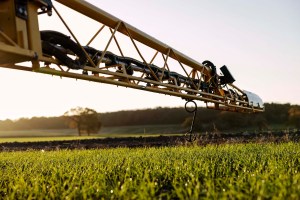
The residual herbicide stack has historically been based on Crystal, with DFF and triallate, followed by a top-up of flufenacet.
In the past, his residual programme has been based around Crystal (flufenacet+ pendimethalin). “I’ve had Crystal trials ever since it first came out, and there’s only been about one year where Liberator (flufenacet+ diflufenican) has trumped it on this farm – Crystal has always been the best performer.”
He will usually add diflufenican and Avadex (triallate) granules to the stack, all applied as soon after drilling as possible. “If we then think we need a little bit more, we will top up with 120 g/ha of generic flufenacet.”
From this season, BASF’s new herbicide Luximo (cinmethylin) will also be an option and Daniel has been impressed by what’s he seen in strip trials on the farm. “The figure BASF has suggested of 20-25% better than the current standard is definitely the case. Last season on the farm it was perhaps even slightly better. It has done a really good job.”
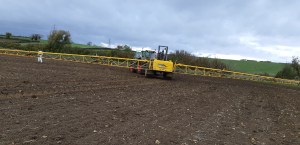
Last season’s Luximo trial has convinced Daniel to base his program around the new herbicide on his home farm and possibly on one of the contract farms, where blackgrass is the biggest issue.
Luximo plus pendimethalin was compared with the farm standard, he explains. “There was no difference in crop effect, indeed you couldn’t see any difference between the two until June. But from June you could see to the line where you had used the Luximo.”
There was blackgrass left in both treatments, he notes. “But it was a tiny amount in the Luximo treated side compared with the Crystal side.”
The background blackgrass population – as measured in a small area of untreated – was around 400 plants/m2, says Aliona Jones, BASF agronomy manager in Lincolnshire. “During the season, my quadrant counts on the Luximo side were consistently zero, while it was usually, on average, one plant in every five quadrants on the Crystal side.
“But when the blackgrass plants started to tiller and grow away, that’s when the numbers started to matter and the differences became very obvious.”
A small area was also only treated with Avadex to see how much control that was bringing, with Daniel interested in whether the extra expense of Luximo could be offset by no longer applying Avadex. But the trial showed Avadex was an important addition, he says.
“You’ve definitely got to use Avadex,” he says. “I’m looking at applying Luximo plus pendimethalin (Luxinum Plus) this autumn, with Avadex added either as a granule or as the liquid formulation, depending on the contractor’s workload.”
Currently he’s planning to use Luximo-based programmes as a standard across his home farm and will likely use it where blackgrass threatens on one of the contract farms. “On the other farm it won’t be used as we don’t have any wheat in the rotation this year.”
Learning through trials
OSR on the farm has been restricted to just one 21ha field despite the current high commodity price.
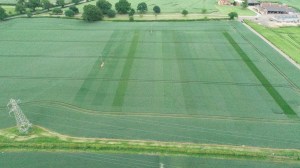
Hosting trials is something that’s important to Daniel – he says they make farming more interesting and he learn from the results.
“That was always the plan,” says Daniel. “It comes down to risk – I wasn’t prepared to buy expensive seed.”
Establishment is a concern, with his usual method being blowing seed into a standing crop of wheat before chopping the straw over the top. The method works effectively for blackgrass management and propyzamide efficacy as the blackgrass seeds remain on the soil surface, he says.
But his eyes have been opened this season by having a Horsch Avatar on demonstration to drill the field, which is primarily grown as a variety demonstration for BASF and Openfield.
Twenty different OSR varieties – 17 hybrids and three conventionals – have been drilled in 6m strips, with 20mm rain a couple of days before drilling, and a further 30mm in the following couple of weeks proving extremely helpful to aid rapid establishment.
“The Avatar is a fantastic piece of kit. The OSR is all 7.5cm tall already after just three weeks. If I’d known that was how it was going to be, I would have definitely put a lot more in.
“But we had been pushing on with cultivations, and I wasn’t prepared to put OSR into cultivated land with the cabbage stem flea beetle risk.”
A similar trial is planned with over 20 wheat varieties, two different fungicide programmes and an untreated.
“They do require a bit of extra messing about and take around a day to drill,” says Daniel. “But I enjoy having trials on the farm – they make farming more interesting and I make sure I learn from the results.”
His wheat variety choices of Gleam, Champion and Cranium were partly influenced by seeing that they were fast developing, leafy varieties which helped suppress blackgrass, he notes.
“They were noticeably more vigorous during the season in the trials. I want varieties that are going to fly out of the ground.”
Both trials will be demonstrated to other farmers during the season, with Daniel playing an important role in communicating his experiences, says Aliona. “It’s invaluable. You can see how much other growers listen when he is talking at these events.”
The Real Results Circle

BASF’s Real Results Circle farmer-led trials are now in their sixth year. The initiative is focused on working with 50 farmers to conduct field-scale trials on their own farms using their own kit and management systems. The trials are all assessed using ADAS’ Agronomics tool which delivers statistical confidence to tramline, or field-wide treatment comparisons – an important part of Real Results.

In this series we follow the journey, thinking and results from farmers involved in the programme. The features also look at some other related topics, such as environmental stewardship and return on investment.
We want farmers to share their knowledge and conduct on-farm trials. By coming together to face challenges as one, we can find out what really works and shape the future of UK agriculture.
To keep in touch with the progress of these growers and the trials, go here.
This article was taken from the latest issue of CPM. For more articles like this, subscribe here.

